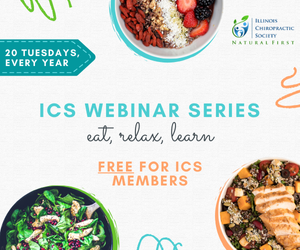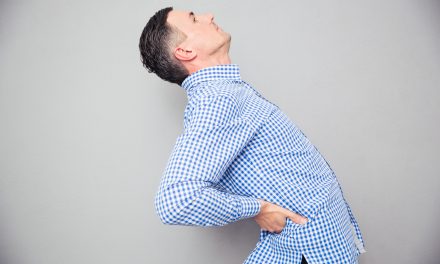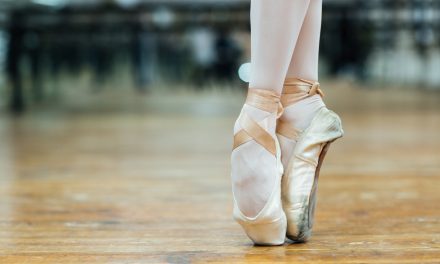
January 2020 Research Synopsis

Check out this collection of 18 recent articles that impact patient management: Review the Latest News – Topics Include:
- Lumbar Disc Herniation: Size Doesn’t Matter
- Increased Step-Rate Decreases Knee Pain
- Vitamin D Deficiency linked to LBP
- Extremity Pain Arises from Asymptomatic Spines
- Cortisone Delays Tendon Recovery
- A Clinical Prediction Rule for Prescribing Orthotics
Whiplash
“The obliquus capitis inferior remains relatively immobile during traumatic events, like whiplash injuries, placing strain as a tethering point on the greater occipital nerve.”
Editorial note: Trauma leads to irritation, inflammation, and loss of neuroplasticity i.e., (adhesions). Check out this tutorial video on how to use greater occipital nerve flossing to mitigate this process.
Scherer SS, Schiraldi L, Sapino G, Cambiaso-Daniel J, Gualdi A, Peled ZM, Hagan R, Pietramaggiori G. The Greater Occipital Nerve and Obliquus Capitis Inferior Muscle: Anatomical Interactions and Implications for Occipital Pain Syndromes. Plastic and reconstructive surgery. 2019 Sep 1;144(3):730-6. Link
Extremity Pain
A new JMPT study published by the McKenzie Institute director of education concluded that, on average, 43.5% of extremity pain originates from the (asymptomatic) spine. Here’s their joint-by-joint breakdown of spinally-referred pain:
- Shoulder pain – 47%
- Elbow pain – 44%
- Wrist/Hand pain – 38%
- Hip pain – 71%
- Knee – 25%
- Ankle/Foot – 29%
Rosedale R, Rastogi R, Kidd J, Lynch G, Supp G, Robbins SM. A study exploring the prevalence of Extremity Pain of Spinal Source (EXPOSS). Journal of Manual & Manipulative Therapy. 2019 Sep 4:1-9. Link
Rotator Cuff
A study published in The Journal of Arthroscopic & Related Surgery concluded that a single rotator cuff corticosteroid injection (in the year before surgery) is associated with 1.3- 2.8 times increased risk of needing revision rotator cuff repair. The study further concluded that caution should be taken when deciding to inject a patient, and this treatment should be withheld if a rotator cuff repair is to be performed within the following six months.
Puzzitiello RN, Patel BH, Nwachukwu BU, Allen AA, Forsythe B, Salzler MJ. Adverse impact of corticosteroid injection on rotator cuff tendon health and repair: A systematic review. Arthroscopy: The Journal of Arthroscopic & Related Surgery. 2019 Dec 17. Link
Shoulder Impingement
“Individuals with shoulder impingement had a greater thoracic kyphosis and less extension ROM than…healthy controls. These results suggest that clinicians could consider addressing the thoracic spine in patients with SIS [shoulder impingement syndrome].”
Hunter DJ, Rivett DA, McKiernan S, Smith L, Snodgrass SJ. Relationship Between Shoulder Impingement Syndrome and Thoracic Posture. Phys Ther. 2019 Dec 11. pii: pzz182. doi: 10.1093/ptj/pzz182. Link
Shoulder Impingement
“35% of the patients with shoulder anterior impingement syndrome (SAIS) had cervical nerve root compression on the same side. Cervical radiculopathy and shoulder impingement syndrome can be easily confused. Although both diseases can occur with different mechanisms, we believe that there is a cause and effect relationship between them.”
The arm squeeze test is a useful 2-second assessment to help identify cervically-referred shoulder pain.
Dernek B, Aydomu S, Duymu TM, Adyeke L, Yardm MY, Kesikta FN, Sindel D, Ketenci A. The incidence of impingement syndrome in cases of cervical radiculopathy: An analysis of 220 cases. Journal of Back and Musculoskeletal Rehabilitation. 2019 Nov 29(Preprint):1-4. Link
Carpal Tunnel Syndrome
“Manual therapy, including desensitization maneuvers of the central nervous system, has been found to be equally effective but less costly (i.e., more cost-effective) than surgery for women with CTS.”
Fernandez-De-Las-Penas C, Ortega-Santiago R, Díaz HF, Salom-Moreno J, Cleland JA, Pareja JA, Arias-Buría JL. Cost-Effectiveness Evaluation of Manual Physical Therapy Versus Surgery for Carpal Tunnel Syndrome: Evidence From a Randomized Clinical Trial. journal of orthopaedic & sports physical therapy. 2019 Feb;49(2):55-63. Link
Carpal Tunnel Syndrome
A 6-month follow-up of 107 carpal tunnel syndrome patients from two prior RCT’s concluded:
“The use of manual therapy based on neurodynamic techniques maintains the beneficial effects 6 months after therapy in CTS patients.” (This finding applied to pain reduction, symptom severity, and strength improvement)
Wolny T, Linek P. Long-term patient observation after conservative treatment of carpal tunnel syndrome: a summary of two randomised controlled trials. Peer J. 2019 Nov 8;7:e8012. Link
Hand Osteoarthritis
“We found that neurodynamic mobilizations immediately decreased hypersensitivity in patients with hand OA, however differences were no longer present at 3-months. The results suggest these techniques may have some limited value in the short-term.”
Check out these tutorials to learn more:
Pedersini P, Valdes K, Cantero-Tellez R, Cleland JA, Bishop MD, Villafañe JH. The effects of neurodynamic mobilizations on pain hypersensitivity in patients with hand osteoarthritis compared to robotic-assisted mobilization: A randomized clinical trial. Arthritis care & research. 2019 Nov 1. Link
Infantile Colic
“Sixteen systematic reviews were identified. Probiotics, fennel extract, and spinal manipulation show promise to alleviate symptoms of colic, although some concerns remain.”
Perry R, Leach V, Penfold C, Davies P. An overview of systematic reviews of complementary and alternative therapies for infantile colic. Systematic reviews. 2019 Dec 1;8(1):271. Link
Lumbar Disc Herniation
A study reported in the Global Spine Journal reported that the percentage of the spinal canal occupied by a herniated disc does not predict which patients will fail nonoperative treatment and require surgery.
Gupta A, Upadhyaya S, Yeung CM, Ostergaard PJ, Fogel HA, Cha T, Schwab J, Bono C, Hershman S. Does Size Matter? An Analysis of the Effect of Lumbar Disc Herniation Size on the Success of Nonoperative Treatment. Global Spine Journal. 2019 Oct 10:2192568219880822. Link
Schmorl’s Nodes
A study of 478 random subjects revealed lumbar vertebral endplate defects in 63.0% of subjects. The presence of endplate defects was associated with 1.64 times increased risk of lifetime back pain.
Chen L, Battié MC, Yuan Y, Yang G, Chen Z, Wang Y. Lumbar vertebral endplate defects on Magnetic Resonance Images: Prevalence, distribution patterns, and associations with back pain. The Spine Journal. 2019 Oct 25. Link
LBP
BMC Research Notes: “Subjects with vitamin D deficiency or insufficiency were (2.3 times) more likely to exhibit LBP than subjects with normal serum 25-hydroxivitamin D3 concentration.”
Pishgahi A, Dolatkhah N, Shakouri SK, Hashemian M, Amiri A, Reihany MD, Jahanjou F. Lower serum 25-hydroxyvitamin D3 concentration is associated with higher pain and disability in subjects with low back pain: a case–control study. BMC Research Notes. 2019 Dec 1;12(1):738. Link
Sciatica
“On a sport-specific level, running and cycling were associated with less radiating and non-radiating LBP. In adulthood, the diversity of sport activities, particularly participation in endurance sports, may be associated with less radiating and non-radiating LBP.”
Kaartinen S, Aaltonen S, Korhonen T, Rottensteiner M, Kujala UM, Kaprio J. Cross-sectional associations between the diversity of sport activities and the type of low back pain in adulthood. European Journal of Sport Science. 2019 Dec 19(just-accepted):1-9. Link
Greater Trochanteric Pain Syndrome
“Magnetic resonance imaging of 16 women with greater trochanteric pain syndrome (GTPS) and 15 asymptomatic controls was undertaken. Significantly smaller muscle volumes were identified in the symptomatic group for the gluteus maximus, gluteus medius, and gluteus minimus. There was no difference in TFL volume. Gluteal muscle atrophy and fatty infiltration in women with GTPS suggests [the gluteal muscles) may be an important target for rehabilitation.”
Cowan RM, Semciw AI, Pizzari T, Cook J, Rixon MK, Gupta G, Plass LM, Ganderton CL. Muscle Size and Quality of the Gluteal Muscles and Tensor Fasciae Latae in Women with Greater Trochanteric Pain Syndrome. Clinical anatomy (New York, NY). 2019 Nov. Link
Patellofemoral Pain Syndrome (PFPS)
The American Journal of Sports Medicine: “A single session of gait retraining using a 10% increase in step rate resulted in significant improvements in running kinematics, pain, and function in runners with patellofemoral pain. These improvements were maintained at 3-month follow-up.”
Bramah C, Preece SJ, Gill N, Herrington L. A 10% Increase in Step-Rate Improves Running Kinematics and Clinical Outcomes in Runners With Patellofemoral Pain at 4 Weeks and 3 Months. The American journal of sports medicine. 2019 Oct 28:0363546519879693. Link
Trigger Points
Ischemic compression vs. dry needling for suboccipital trigger points: “Both interventions could reduce headache symptoms, pressure-point thresholds, and trigger point area. Neither intervention was found to be superior to the other in short-term follow-up. Ischemic compression may be preferred since it has fewer unwanted side effects compared to dry needling.”
Togha M, Bahrpeyma F, Jafari M, Nasiri A. A sonographic comparison of the effect of dry needling and ischemic compression on the active trigger point of the sternocleidomastoid muscle associated with cervicogenic headache: A randomized trial. Journal of Back and Musculoskeletal Rehabilitation. 2019 Nov 21(Preprint):1-1. Link
Orthotic Clinical Prediction Rule
A BMC Musculoskeletal Disorders study identified five predictors for determining which plantar heel pain patients may benefit from custom foot orthotics:
- “Average pain intensity decreased by over 1.5 points with a trial of anti-pronation taping
- Range of ankle plantarflexion > 54 degrees
- Strength of ankle plantar flexors on the symptomatic side was equal to or stronger than that on the other side
- Range of hip internal rotation < 39 degrees
- Range of hip external rotation > 45 degrees
The presence of three or more predictors increased the rate of achieving positive outcome (with custom orthotics) from 66 to 89%.”Biomechanical Anti-Pronation Taping (BAPT)
Biomechanical anti-pronation taping (BAPT) can be used to
help predict a response to custom foot orthotics. BAPT is applied with three
strips of rigid 1 ½ inch Leukotape P spanning the arch, and one more spanning
the heel. Begin with the most distal
strip first. Anchor the tape on the lateral side first, and slightly “lift” the
arch when attaching the medial end, equidistantly up each side of the foot.
Apply the more proximal second and third strips in a similar fashion, with
approximately ½ inch overlap. The tape is worn for 2-3 days before a response
is assessed. Patients who report decreased pain (by more than 1.5 points on a
0-10 VAS scale) have shown a higher likelihood to benefit from custom
orthotics. (Wu et al. 2019)

Wu FL, Shih YF, Lee SH, Luo HJ, Wang WT. Can short-term effectiveness of anti-pronation taping predict the long-term outcomes of customized foot orthoses: developing predictors to identify characteristics of patients with plantar heel pain likely to benefit from customized foot orthoses. BMC musculoskeletal disorders. 2019 Dec;20(1):264. Link

















